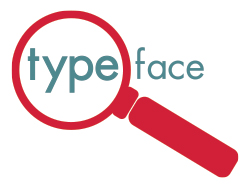 If you’re not a graphic designer or branding specialist, your experience with choosing typefaces is likely limited to the little dropdown box at the top of your screen, where you select from fonts like Arial, Universal, Comic Sans, and the whimsically-named Wingdings. You may not even realize that a typeface is a design of lettering (i.e. sans serif), and fonts are variations within each particular typeface (i.e. Arial or Calibri).
If you’re not a graphic designer or branding specialist, your experience with choosing typefaces is likely limited to the little dropdown box at the top of your screen, where you select from fonts like Arial, Universal, Comic Sans, and the whimsically-named Wingdings. You may not even realize that a typeface is a design of lettering (i.e. sans serif), and fonts are variations within each particular typeface (i.e. Arial or Calibri).
Further, you probably choose your font for documents and emails based on your own personal preference of what you think “looks good.” Is it pretty? Professional? Strong? Does it reflect your personality? Does it set you apart? Or is it just the default font used by Word, Outlook, etc. and you never give it a second thought?
But in marketing and branding…typeface and font matter A LOT, and they can’t simply be based on your personal preferences. Therefore, it requires a bit of knowledge to make wise choices. Why?
First, because accessibility and legibility are essential in marketing, and not just because laws and the ADA say so. There’s a large group of folks out there with poor vision, learning disabilities, and reading/comprehension issues, and you’re ignoring that entire audience if they don’t have access and the ability to comprehend your messages.
But second – and as importantly – the world is full of clutter and speed, which has reduced people’s attention spans to mere milliseconds. Why would you risk wasting a precious point of contact using a typeface or font that’s even a tiny bit difficult to decipher? You’ll lose ‘em, fast.
So here are eight super-smart tips for choosing your typeface and fonts wisely when designing your logo, brand identity, website and more. This articulate gent Gareth Ford Williams succinctly details – in an easy 10-minute read – what you should consider. And if psychology bores you, just skip right to the list of eight things you need to know:
A Guide to Understanding What Makes a Typeface Accessible
I guarantee after reading this, at the very least, you’ll forever beware of the mischief that “imposter letter shapes” cause. Sneaky little buggers.
Got your typeface and font all sorted? Now try these Four Quick Tips to Strengthen Your Writing.
 get travel marketing tips
get travel marketing tips 




